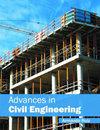A Wooden Pin Reinforcement of Ancient Chinese Wooden Temple: A Case of Daxiong Hall
IF 1.6
4区 工程技术
Q3 CONSTRUCTION & BUILDING TECHNOLOGY
引用次数: 0
Abstract
Post and lintel frame is a prominent architectural structure in Chinese temple architecture, characterized by its wooden construction. Mortise–tenon joints (MTJs) serve as the primary connection method for these wooden structures, employing straight mortise nodes (SMNs) and through-mortise joints (TMNs). This study presents a method that utilizes wooden pins to reinforce MTJs, enhancing the seismic performance of timber frame structures. Finite element (FE) simulation verifies the effectiveness of wooden pins in reinforcing both SMNs and TMNs, leading to improved load-bearing capacity and ductility of the MTJs. Additionally, the study confirms that reinforced nodes help to restrict the displacement changes within the wooden frame. The paper also investigates the optimal distribution of MTJs reinforced by the wooden pins throughout the structure, with the aim of enhancing the wood frame’s seismic performance. The results show the bearing capacity of MJT reinforced with wooden pins is approximately 11.3% higher compared to that of MTJ without reinforcement. The reinforcement of wood pins effectively controls the horizontal displacement of the overall structure of the wooden frame, which is reduced by about 50%–62% compared with the unreinforced wooden frame. The locating the wooden pin-reinforced MTJs in the outer columns and middle layer columns reduces the structural displacement, which is 31.53% in X direction, 5% in Y direction, and 25.86% in Z direction.中国古代木结构寺庙的木销加固:大雄宝殿案例
柱楣架是中国寺庙建筑中一种突出的建筑结构,其特点是木质结构。榫卯结构(MTJ)是这些木结构的主要连接方法,采用直榫节点(SMN)和通榫节点(TMN)。本研究提出了一种利用木销加固 MTJ 的方法,以提高木框架结构的抗震性能。有限元(FE)模拟验证了木钉加固 SMN 和 TMN 的有效性,从而提高了 MTJ 的承载能力和延展性。此外,研究还证实,加固节点有助于限制木框架内的位移变化。本文还研究了由木销加固的 MTJ 在整个结构中的最佳分布,目的是提高木框架的抗震性能。结果表明,与未加固的 MTJ 相比,使用木钉加固的 MJT 的承载能力提高了约 11.3%。木销加固有效控制了木框架整体结构的水平位移,与未加固的木框架相比,水平位移减少了约 50%-62%。将木销加固的 MTJ 设置在外层柱和中层柱,可减少结构位移,X 方向位移减少 31.53%,Y 方向位移减少 5%,Z 方向位移减少 25.86%。
本文章由计算机程序翻译,如有差异,请以英文原文为准。
求助全文
约1分钟内获得全文
求助全文
来源期刊

Advances in Civil Engineering
Engineering-Civil and Structural Engineering
CiteScore
4.00
自引率
5.60%
发文量
612
审稿时长
15 weeks
期刊介绍:
Advances in Civil Engineering publishes papers in all areas of civil engineering. The journal welcomes submissions across a range of disciplines, and publishes both theoretical and practical studies. Contributions from academia and from industry are equally encouraged.
Subject areas include (but are by no means limited to):
-Structural mechanics and engineering-
Structural design and construction management-
Structural analysis and computational mechanics-
Construction technology and implementation-
Construction materials design and engineering-
Highway and transport engineering-
Bridge and tunnel engineering-
Municipal and urban engineering-
Coastal, harbour and offshore engineering--
Geotechnical and earthquake engineering
Engineering for water, waste, energy, and environmental applications-
Hydraulic engineering and fluid mechanics-
Surveying, monitoring, and control systems in construction-
Health and safety in a civil engineering setting.
Advances in Civil Engineering also publishes focused review articles that examine the state of the art, identify emerging trends, and suggest future directions for developing fields.
 求助内容:
求助内容: 应助结果提醒方式:
应助结果提醒方式:


